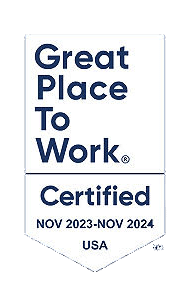
In the ever-evolving world of construction, it is essential for companies to stay ahead of the curve in order to succeed in a rapidly changing landscape. Recently, I had the privilege of attending the CFMA (Construction Financial Management Association) Annual Conference, where industry leaders and experts came together to explore the latest trends and insights shaping the future of construction. Below I will discuss 4 key takeaways from the conference and highlight how your construction company can embrace transformation for continued growth and success.
In this blog, I will cover the following key points:
- How to Select the Right Software
- The Future of Technology and Robotics in Construction
- Utilizing AI And Large Language Models in Construction
- Leveraging Technology to Drive Automation and efficiencies
1. How to Select the Right Software
Clients typically stay with software systems for extended periods, ranging from 7 to 30 years. However, there comes a time when change becomes necessary. Deciding to transition to a new software system, especially an ERP system, is a significant decision for any organization. It requires careful consideration and planning. Here are some key indicators and steps to help determine when it’s time to make the switch:
- Current Software Inefficiencies
- Business Growth and Scalability
- Outdated Technology
- Inadequate Functionality
- Integration Challenges
- Lack of Vendor Support
- High Maintenance Costs
- Compliance and Regulatory Requirements
- User Feedback and Satisfaction
Once you have decided to explore new software options, the steps mentioned can help you in the selection process:
- List out 10 must-haves: Identify the essential features and functionalities you require in the new ERP system. This list will serve as a basis for evaluating potential solutions.
- Score them with priority: Assign a priority score to each of the 10 must-haves based on their importance to your business. This will help you weigh the significance of each requirement during the evaluation process.
- In-depth demonstrations: Request in-depth demonstrations from ERP vendors to showcase how their system addresses your specific needs and aligns with your priority criteria. This step will allow you to see the software in action and evaluate its fit for your organization.
In conclusion, changing to a new software system is a crucial decision that should be thoroughly evaluated based on your organization’s specific needs. If you want to minimize risk, make informed choices and invest in the right software.
2. The Future of Technology and Robotics in Construction
In the construction industry, technology is increasingly becoming a “right to play” for companies that want to stay competitive and thrive in a rapidly evolving landscape. Below are several areas where technology is revolutionizing the construction industry and redefining the way companies approach their work:
- Enhanced Safety Measures: Technology in construction includes innovations like wearables, IoT devices, and real-time monitoring systems that promote better safety practices. Implementing these technologies helps reduce accidents and ensures a safer working environment for construction workers.
- Quality Control and Accuracy: Advanced technologies like Building Information Modeling (BIM) enable accurate 3D modeling of projects before construction begins. This allows for better visualization, clash detection, and accurate material estimation, resulting in improved project quality.
- Cost Management: Construction technology tools help in precise cost estimation, budget tracking, and financial management. This ensures that projects are completed within the allocated budget, avoiding costly overruns.
- Project Collaboration and Communication: Collaboration tools and cloud-based platforms facilitate seamless communication and real-time collaboration among project stakeholders, including architects, engineers, contractors, and clients.
- Remote Project Management: Technology allows for remote project monitoring and management, enabling construction companies to oversee multiple projects in different locations efficiently.
- Real-time Reporting and Insights: With technology, construction managers can access real-time project data and performance metrics. This helps in identifying potential issues early, making informed decisions, and implementing timely corrective actions.
- Competitive Advantage: Companies that invest in construction technology gain a competitive edge in the industry. Embracing modern technology demonstrates a commitment to innovation and positions construction firms as forward-thinking and reliable partners for clients.
- Compliance and Regulations: Construction companies must adhere to various regulations and building codes. Technology aids in compliance tracking and ensures that projects meet the necessary legal requirements.
- Talent Attraction and Retention: The adoption of technology can make construction companies more attractive to tech-savvy employees. Embracing innovative solutions can enhance the overall employee experience and foster a culture of continuous improvement.
3. Utilizing AI And Large Language Models in Construction
While AI and large language models offer significant potential for the construction industry, it’s important to consider ethical and privacy concerns when implementing such technologies.
Here are some ways AI and language models can be utilized in construction:
- Project Planning and Design: AI can assist in generating designs, architectural plans, and 3D models based on input parameters and constraints. Language models can analyze project requirements and propose design options, helping architects and engineers make informed decisions.
- BIM and Data Analysis: BIM can be enhanced to automate data analysis, clash detection, and optimize building layouts. AI can also help in analyzing historical project data to identify patterns and improve future construction processes.
- Project Management and Scheduling: Project management tools can streamline scheduling, resource allocation, and task assignments. Language models can help in generating project reports and automated updates for stakeholders.
- Risk Management: AI can be utilized for safety monitoring on construction sites using computer vision to detect potential hazards and ensure workers comply with safety protocols. It can also assist in predicting and mitigating risks associated with construction projects.
- Materials and Supply Chain Management: AI and language models can optimize material inventory and supply chain management, ensuring timely delivery of construction materials and reducing waste.
- Cost Estimation and Budgeting: More accurate cost estimation for construction projects based on historical data and project-specific parameters. This helps in creating more reliable budgets and controlling project costs.
- Quality Control and Defect Detection: Inspection systems can identify defects and deviations in construction work, ensuring adherence to quality standards.
- Predictive Maintenance: Predict maintenance needs for construction equipment and infrastructure, minimizing downtime and maximizing productivity.
- Training and Skill Development: AI can be used to create interactive training modules and simulations for construction workers to improve their skills and safety awareness.
- Real-time Data Analytics: Assist in processing and analyzing real-time data from construction sites, providing actionable insights and enabling proactive decision-making.
4. Leveraging Technology to Drive Automation and Efficiencies
Construction technology streamlines processes, automates tasks, and reduces manual labor, leading to improved efficiency and productivity on construction sites. Construction companies that embrace technology can complete projects faster and more cost-effectively.
From ‘The Covergence of ConTech and InsureTech’ presentation by James Benham to the panel discussions on ‘The Fundamentals of Financial Data interoperability’, much of the conference courses focused around creating efficiencies in our business workflows by automating tedious, daily tasks. By incorporating Cloud-connected data, companies can eliminate manual processes and take advantage of benefits including scalability, accessibility, cost-efficiency, and improved collaboration.
This data allows contractors and CPA firms to exchange machine readable financial documents in an industry standard format (XBRL) so things like the WIP report, financial documents for banks, surety, Owners or external Stakeholders can be automated.
As a dedicated member of the CFMA’s Alaska Chapter, attending the CFMA Annual Conference was an excellent opportunity to gain valuable insights on the future of construction. As I continue my journey towards the CCIFP (The Certified Construction Industry Financial Professional) certification, I am more determined than ever to further my knowledge and skills. The conference not only provided a deeper understanding of emerging technologies but also emphasized the importance of financial expertise in driving successful construction projects. I’m excited to leverage the full potential of new technology to drive growth and deliver outstanding results for our construction clients.


